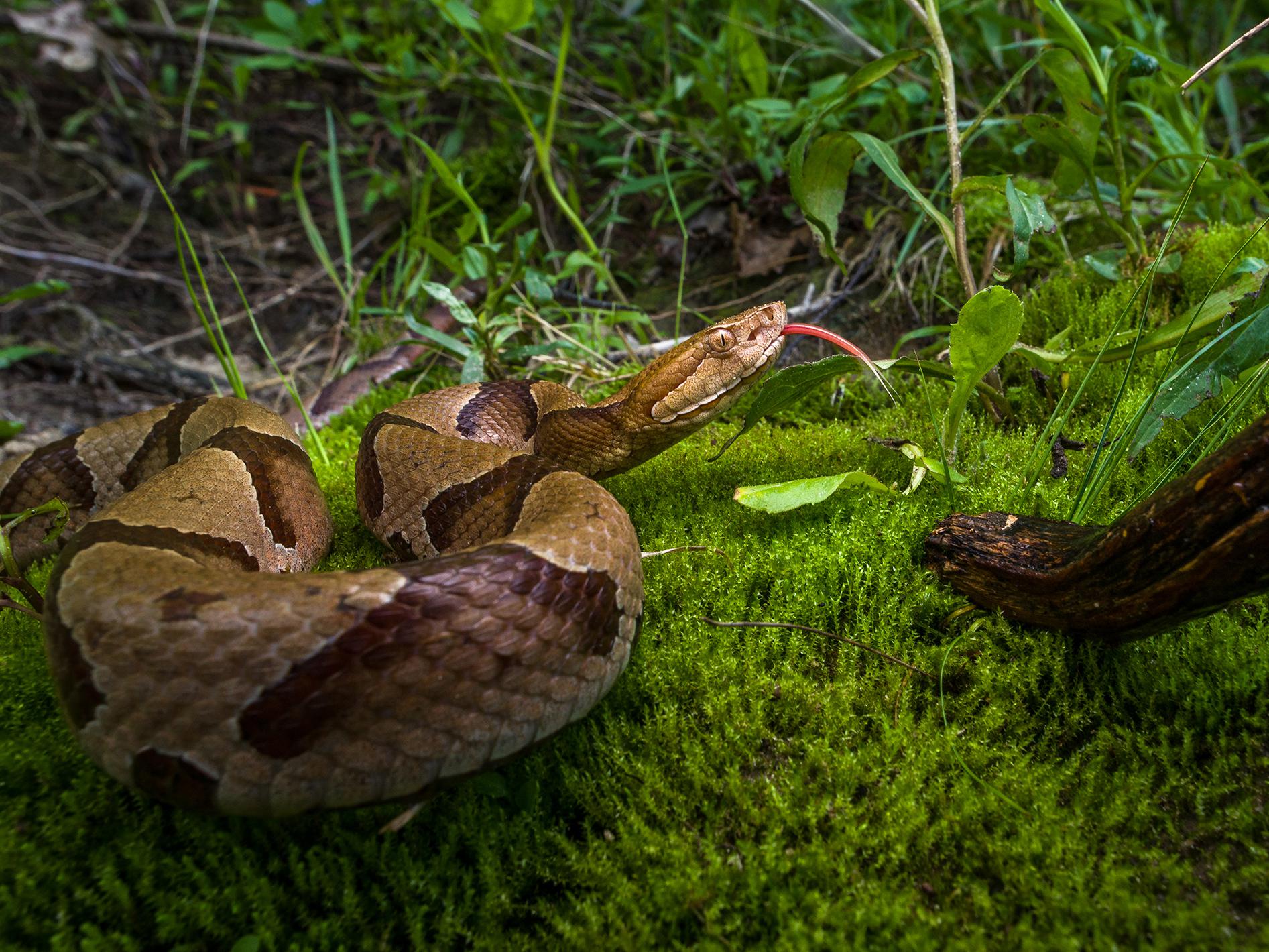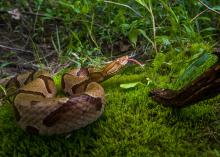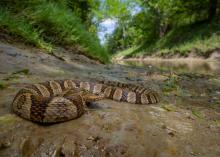Information Possibly Outdated
The information presented on this page was originally released on June 24, 2016. It may not be outdated, but please search our site for more current information. If you plan to quote or reference this information in a publication, please check with the Extension specialist or author before proceeding.
Snake encounters increase during summer months
STARKVILLE, Miss. -- Mississippi residents are not alone in their appreciation of hiking trails and water activities during the hot days of summer. Wildlife, including snakes, are right there with them.
As outdoor recreation picks up, so does water recreation. Where there is water, there will be snakes. There are all different kinds of snakes people encounter in Mississippi. Some are potentially dangerous and others are completely harmless.
Typically, most snakes you will encounter are harmless. The majority of snakes in Mississippi are water-snakes, which bears a striking resemblance to cottonmouths and are often mistaken and killed because of this. One reason they are so similar in appearance is because they occur in similar habitats, such as rivers, streams and lakes. They often require similar camouflage or markings to blend in more easily to that surrounding habitat.
Most often, snakes immediately flee when sighted. Mississippi has a total of six venomous species. The most common three of the six are the cottonmouth, copperhead and timber rattlesnake. The other three species are the coral snake, pigmy rattlesnake and the eastern-diamondback rattlesnake.
The eastern-diamondback rattlesnake is recognized as the largest venomous snake in North America and is also equipped with the largest fangs of any species in North America. These facts, in combination with its highly toxic venom, easily make it the most deadly species in our state and should be avoided at all costs.
Occurring in habitats and coastal environments of South Mississippi, the eastern diamondbacks generally do not occur north of Interstate 20. In fact, due to their persecution by the public and development of coastal areas, their populations are declining. This is unfortunate as they play an irreplaceable role in the function of their ecosystem. They also provide benefits to humans, medicinally and ecologically. In the United States, rattlesnakes are the No. 1 preventer of lime disease. They constantly, and almost exclusively eat rodents, which carry lime-disease-harboring ticks.
To simply move and locate prey, costs snakes a lot of energy. They restore this energy by feeding and basking in sunlight, which is why snakes are seen stretched across hiking trails and roads.
One of the most energy consumptive activities that venomous snakes experience is the production of venom. This venom is energetically expensive for them to make, and generally snakes will not waste their venom on things they do not plan to eat.
Venomous snakes are potentially dangerous and should always be given their space. The best way to avoid being bitten is to leave the snake alone as 80 percent of all bites occur when a person tries to kill the snake. They belong here and are part of Mississippi’s natural resources just as are the white-tailed deer and bobwhite quail.
Hopefully this passage will give you a little peace of mind when you are engaged in outdoor recreation this year and years to come.

Editor’s Note: Extension Outdoors is a column authored by several different experts in the Mississippi State University Extension Service.






